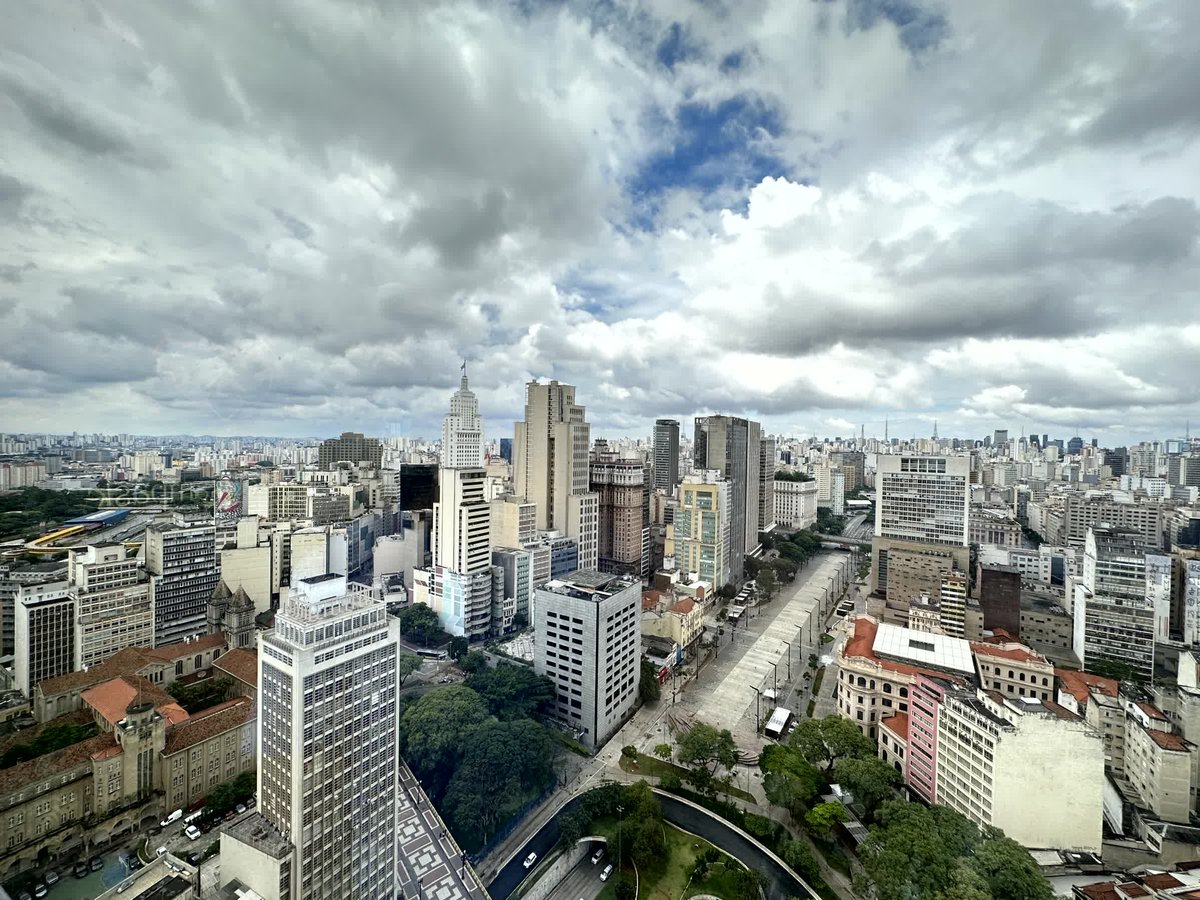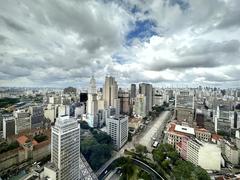
Complete Guide to Vale do Anhangabaú: Visiting Hours, Tickets, and Attractions in São Paulo, Brazil
Date: 14/06/2025
Introduction
Vale do Anhangabaú is a vibrant urban valley at the heart of São Paulo, Brazil, renowned for its historical depth and pulsating cultural life. This emblematic space encapsulates São Paulo’s evolution from a rural outpost to a global metropolis, standing as a bridge—both literal and symbolic—between the city’s past and present. Framed by such architectural icons as the Viaduto do Chá, Martinelli Building, and Theatro Municipal, the Vale is an unmissable destination for travelers seeking to experience the essence of São Paulo’s heritage and contemporary spirit (Wikipedia; Wikitravel; ArchDaily).
Visitors can expect a multifunctional public esplanade that is both historically significant and alive with free cultural events, sports facilities, artisan markets, and family-friendly amenities. With easy access via major metro lines and bus routes, as well as extensive accessibility features, Vale do Anhangabaú is open to all and reflects the dynamic, inclusive character of São Paulo (Prefeitura de São Paulo; Virgula; São Paulo Secreto).
Historical Evolution
Indigenous Origins and Colonial Era
The name “Anhangabaú” derives from the Tupi-Guarani language, meaning “poisonous water” or “water of bad spirits,” referring to the valley’s original river with iron-rich, acidic waters (Wikipedia). Indigenous peoples viewed the river with caution, and it formed a natural boundary for early São Paulo settlements (Wikitravel).
19th Century Transformation
During the 1800s, the valley was dominated by rural estates belonging to São Paulo’s elite. Its marshy conditions and the river’s meandering course delayed urban growth. The construction of the Viaduto do Chá in 1892 was a pivotal moment, physically connecting the old and new city centers and stimulating the valley’s urbanization (Netleland; A Vida no Centro).
Early 20th Century: Civic Ambitions
By 1910, the area was inaugurated as Parque do Anhangabaú, an elegant urban park with European-inspired landscaping, fountains, and promenades. This development reflected São Paulo’s aspirations for modernity and cosmopolitanism, and soon the park was surrounded by iconic buildings such as the Martinelli and Altino Arantes towers (Wikipedia).
Mid to Late 20th Century: Modernization and Pedestrianization
The mid-20th century saw the valley’s gardens replaced by major roadways and subterranean passages, notably the “Buraco do Ademar” in the 1950s. While this facilitated car traffic, it diminished the area’s public charm (Netleland). A major shift occurred in the 1980s, with urban renewal projects reclaiming the space for pedestrians and events, culminating in a vast esplanade ideal for gatherings and cultural activities. The Vale became the stage for pivotal moments like the 1984 Diretas Já rally (Wikipedia).
21st Century: Inclusive Urban Renewal
Recent revitalizations, informed by public consultation and led by international specialists, have transformed the Vale into a green, accessible, and culturally rich space. Features include native landscaping, programmable LED lighting, a large skate park, children’s playgrounds, multipurpose cultural venues, and seamless transit connectivity (Prefeitura de São Paulo; ArchDaily).
Architectural and Urban Features
Vale do Anhangabaú is defined by its broad esplanade and the dramatic presence of historic and modernist structures. Notable landmarks include:
- Viaduto do Chá: Iconic bridge uniting the historical and modern city centers.
- Martinelli Building: São Paulo’s first skyscraper, offering panoramic city views.
- Edifício Matarazzo: A modernist office tower symbolizing the city’s mid-century growth.
- Theatro Municipal: A grand opera house with rich artistic programming.
The urban design prioritizes pedestrian flows, accessibility, and flexible spaces for events and leisure (ArchDaily).
Practical Visitor Information
Opening Hours and Admission
- Hours: Open 24 hours, year-round.
- Admission: Free to all visitors.
- Event Hours: Some events may have specific schedules; consult official calendars for details (São Paulo Secreto).
How to Get There
- Metro: Direct access from Anhangabaú (Line 3 – Red) and São Bento (Line 1 – Blue) stations.
- Bus: Numerous bus routes serve the area; consult local transport apps.
- Car: Parking is limited; public transit is the most convenient option.
Accessibility
- Fully wheelchair accessible with smooth walkways and ramps.
- Public restrooms and shaded seating areas throughout the esplanade.
- Signage and lighting ensure safety and wayfinding, even during crowded events.
Attractions and Nearby Landmarks
- Theatro Municipal de São Paulo: Historic theater with guided tours and performances.
- Martinelli Building: Architectural icon with observation deck.
- Pátio do Colégio: The city’s founding site.
- Municipal Market: A culinary destination for local flavors.
- Praça da República: Another vibrant plaza nearby.
- Galeria do Rock: Shopping and music hub.
Combine your visit to Vale do Anhangabaú with these attractions for a full day in São Paulo’s Centro Histórico.
Events, Festivals, and Cultural Life
Major Events
- São Paulo Anniversary: Annual festivities in January with parades, concerts, and art installations (Gazeta SP).
- Time Warp Brasil: International electronic music festival (Virgula; CNN Brasil).
- Pride Month and Castro Festival: Celebrating diversity with performances and parades (Bandsintown).
Everyday Cultural Life
- Spontaneous Performances: Samba circles, skateboarding, street art, and dance.
- Artisan and Gastronomy Fairs: Local crafts and food stalls, especially during “Feira no Vale.”
- Sports Facilities: 980 m² skate park with free lessons and open play.
- Sesc Verão: Summer transformation into a “city beach” with sand courts and fitness activities (TuristandoSP).
Amenities and Family-Friendly Features
- Food & Drink: Kiosks offering juices, snacks, açaí, and local delicacies. Expanded options during festivals.
- Restrooms & Seating: Ample public facilities and shaded rest areas.
- Children’s Zones: Supervised play areas and family programming.
- Safety: Security presence, improved lighting, and surveillance during events.
Guided Tours and Photo Opportunities
- Guided Tours: Available through local operators; topics include history, architecture, and urban renewal.
- Photo Spots: Viaduto do Chá, Martinelli Building, skate park, and event stages.
Frequently Asked Questions (FAQ)
Q: What are the opening hours?
A: The esplanade is open 24/7; event times may vary.
Q: Is there an entrance fee?
A: No, access is free.
Q: Are pets allowed?
A: Yes, on a leash.
Q: Is it accessible for people with reduced mobility?
A: Yes, with ramps and accessible pathways.
Q: How to get there by public transport?
A: Use the Anhangabaú or São Bento metro stations, or various bus lines.
Q: Do I need to register for events?
A: Most events are free and open, but some activities may require advance sign-up.
Practical Tips
- Best Times: Weekends and evenings for lively events; weekday mornings for tranquility.
- Weather: Bring sun protection in summer, a jacket for cool evenings.
- Transport: Prefer public transit over driving.
- Safety: Be mindful of your belongings, especially during major events.
- Combine Visits: Explore neighboring landmarks for a richer experience.
Visual and Interactive Resources
Explore interactive maps and virtual tours online for planning. Many official tourism sites and photo galleries offer immersive content (Mobilize - Vale do Anhangabaú Study; Trek Zone).
Conclusion
Vale do Anhangabaú is one of São Paulo’s most dynamic public spaces, offering a blend of history, culture, recreation, and architectural splendor. Its inclusive design, central location, and vibrant programming make it the perfect starting point for anyone wanting to experience the authentic pulse of São Paulo. Whether attending a festival, exploring its history, or simply relaxing amid the city’s architectural icons, Vale do Anhangabaú promises a memorable visit.
Call to Action
Stay updated on Vale do Anhangabaú’s events, tours, and visitor tips by downloading the Audiala app. Discover more about São Paulo’s historical landmarks and cultural events by following our social media channels and exploring our related guides!
Further Reading and Sources
- Wikipedia
- Wikitravel
- Prefeitura de São Paulo
- Virgula
- São Paulo Secreto
- ArchDaily Brasil
- Gazeta SP
- CNN Brasil
- Tourb
- TuristandoSP
- Mobilize - Vale do Anhangabaú Study
- Trek Zone - Vale do Anhangabaú
- RMJM - Urban Renewal Project
- Wonderland in Rave - Time Warp Festival
- Guia da Semana - Events in São Paulo





































































































































































